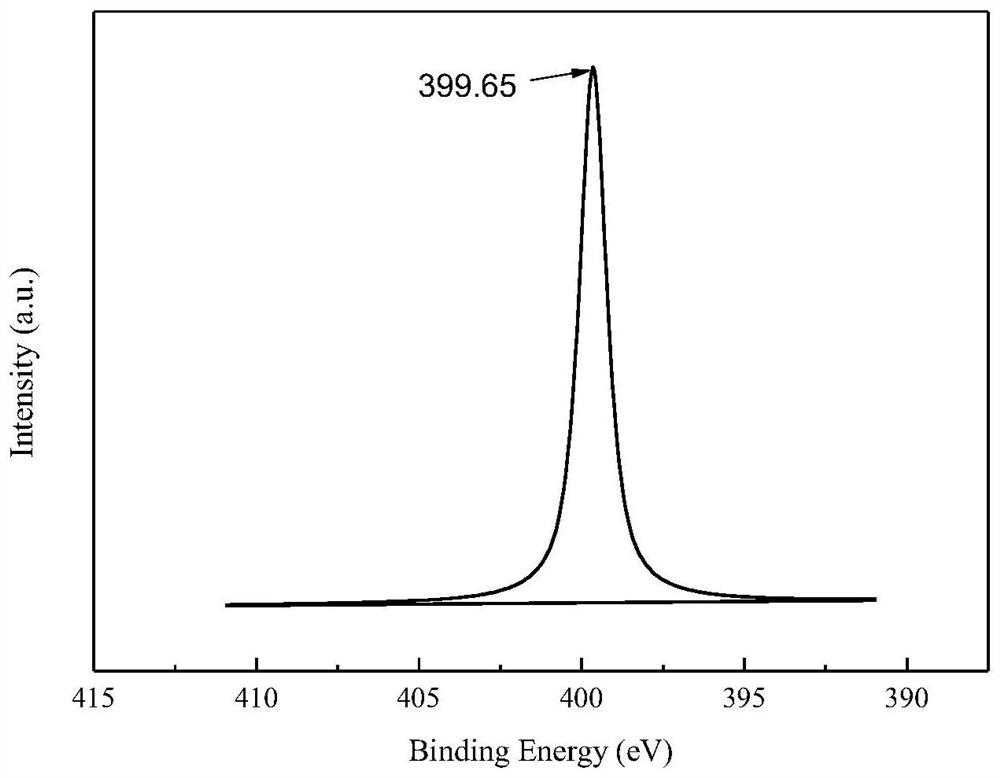Platinum-carbon catalyst as well as preparation method and application thereof
A platinum-carbon catalyst and catalyst technology, applied in electrical components, battery electrodes, circuits, etc., can solve the problems of low catalytic activity, uneven dispersion of platinum nanoparticles, and low platinum utilization rate, and achieve simple process, improved stability, The effect of improving stability
- Summary
- Abstract
- Description
- Claims
- Application Information
AI Technical Summary
Problems solved by technology
Method used
Image
Examples
preparation example Construction
[0066] A method for preparing a platinum-carbon catalyst, comprising: (1) a step of impregnating a nitrogen source: mixing a carbon material with an aqueous solution of a nitrogen source, and impregnating it to obtain a carbon material impregnated with a nitrogen source; (2) manufacturing a nitrogen-doped carbon material Step: raise the temperature of the carbon material impregnated with nitrogen source obtained in (1) to 1000°C to 1500°C at a rate of 8°C / min to 15°C / min in an inert gas, and then perform constant temperature treatment for 0.5h to 10h to obtain Nitrogen-doped carbon material; (3) step of supporting platinum: using the nitrogen-doped carbon material obtained in (2) as a carrier to support platinum.
[0067] According to the preparation method of the platinum-carbon catalyst of the present invention, the temperature of the constant treatment may be 1000°C to 1500°C, preferably 1150°C to 1450°C; the treatment time may be 0.5h to 10h, preferably 1h to 5h, more prefe...
Embodiment 1
[0113] This example is used to illustrate the preparation of the nitrogen-doped carbon support of the present invention.
[0114] Immerse 1g of Vulcan XC72 in 20mL of 2.5wt% ammonia solution for 24h; dry it in an oven at 100°C; then put it into a tube furnace and raise the temperature of the tube furnace to 1100°C at a rate of 8°C / min. Constant temperature treatment for 3 hours; nitrogen-doped carbon support was obtained after natural cooling, numbered as carbon support A.
[0115] Sample Characterization and Testing
[0116] The nitrogen mass fraction analyzed by XPS is 1.43%; the oxygen mass fraction analyzed by XPS is 9.31%; the specific surface area is 239m 2 / g; resistivity 1.28Ω·m.
[0117] figure 1 It is the XPS spectrogram of the carbon carrier A of embodiment 1.
Embodiment 2
[0119] This example is used to illustrate the preparation of the nitrogen-doped carbon support of the present invention.
[0120] Immerse 1g of Vulcan XC72 in 15mL of 0.7wt% aqueous urea solution for 24h; dry it in an oven at 100°C; Constant temperature treatment for 3 hours; nitrogen-doped carbon support was obtained after natural cooling, numbered as carbon support B.
[0121] Sample Characterization and Testing
[0122] The mass fraction of nitrogen by XPS analysis is 0.68%; the mass fraction of oxygen by XPS analysis is 8.92%; the resistivity is 1.25Ω·m.
PUM
| Property | Measurement | Unit |
|---|---|---|
| Specific surface area | aaaaa | aaaaa |
| Resistivity | aaaaa | aaaaa |
| Pore volume | aaaaa | aaaaa |
Abstract
Description
Claims
Application Information
 Login to View More
Login to View More - R&D
- Intellectual Property
- Life Sciences
- Materials
- Tech Scout
- Unparalleled Data Quality
- Higher Quality Content
- 60% Fewer Hallucinations
Browse by: Latest US Patents, China's latest patents, Technical Efficacy Thesaurus, Application Domain, Technology Topic, Popular Technical Reports.
© 2025 PatSnap. All rights reserved.Legal|Privacy policy|Modern Slavery Act Transparency Statement|Sitemap|About US| Contact US: help@patsnap.com



